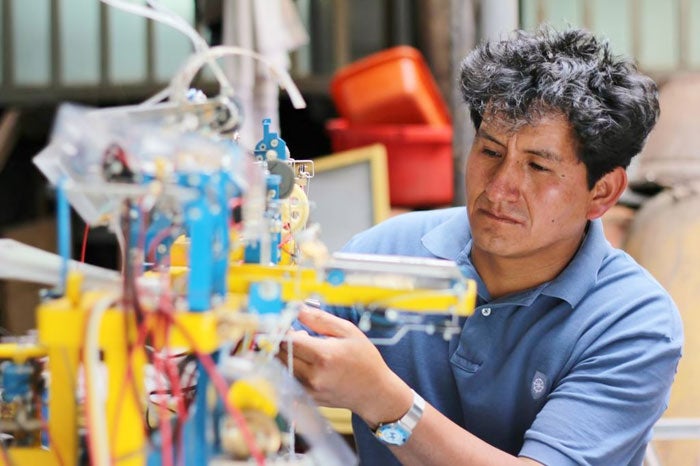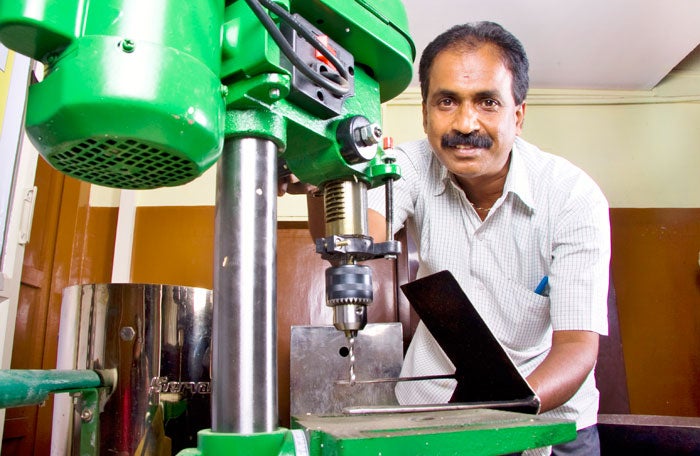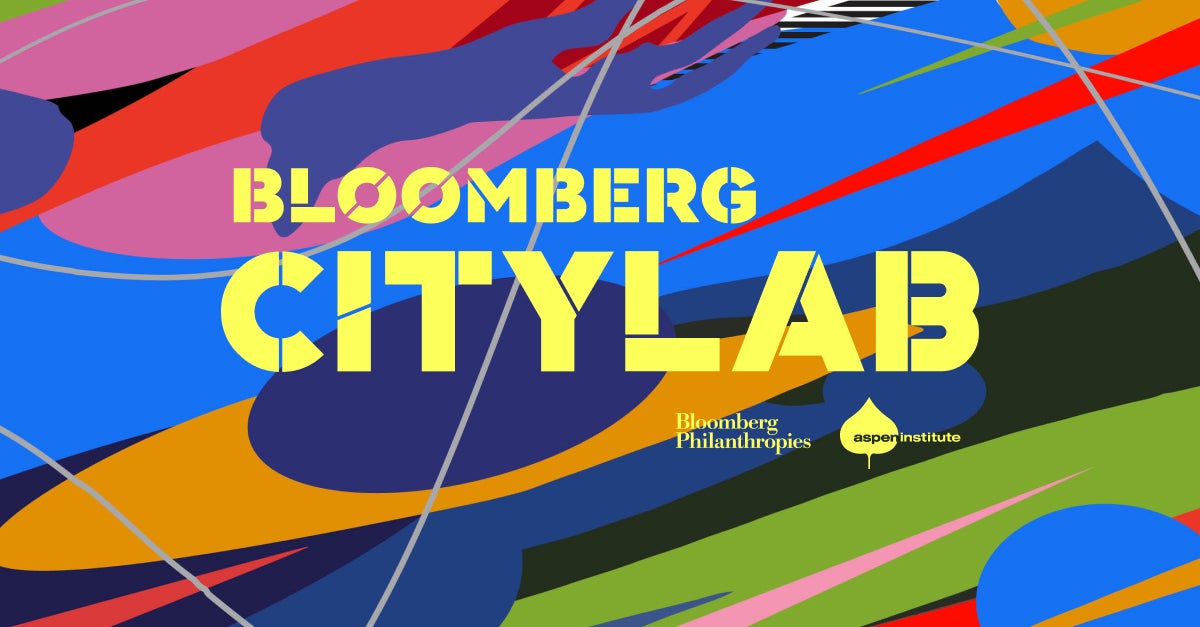Technology changes lives. From the LED light bulb to the flush toilet, inventions make societies healthier, safer and more productive. However, many inventions created in industrialized economies struggle to adapt to emerging markets, and do not deliver social impact to those living at the base of the economic pyramid (BoP). To resolve this issue and bring the power of technology to bear on the challenges faced by the BoP, a growing number of entrepreneurs in emerging markets have begun taking the lead by adapting technologies or inventing their own that cater to the unique needs, assets and limitations of BoP consumers. These “invention-based entrepreneurs” create sustainable businesses that use market-based mechanisms to deliver products to a wider audience.
Invention-based entrepreneurs have great potential to create social and economic impact in their communities. However, their ability to succeed is largely determined by a number of factors within their entrepreneurial ecosystem. If emerging markets hope to unlock the potential social and economic impact of invention, they must build vibrant ecosystems that support invention-based entrepreneurs.
Over the last year, the Aspen Network of Development Entrepreneurs (ANDE) with the support of the Lemelson Foundation convened a series of roundtables in Brazil, India, Kenya, South Africa, and the United States. These events brought together experts, policy makers and practitioners to explore the specific elements that foster strong ecosystems for invention-based entrepreneurs and identify areas where additional work is needed.
These conversations revealed three areas of particular interest that must be addressed in order to build entrepreneurial ecosystems to support the creation of impact technologies. They are: expanding access to physical capital and prototyping equipment, inspiring and educating the next generation of emerging market inventors, and streamlining the process of accessing markets.
Physical capital
Turning an idea into a physical product requires a time-consuming and iterative prototyping process. Rarely is the first version a winner right out of the gate. In emerging markets, developing multiple prototypes can be extremely expensive and even more time-intensive as the physical equipment, machinery, and industrial inputs required to build prototypes are rarely available locally. As an alternative, many entrepreneurs develop their prototypes abroad. However, repeating the process of producing a prototype abroad, shipping it to the target market, testing it, and making design revisions can become prohibitively expensive. If in-country facilities and specialized materials to build and iterate products were made available,[1] entrepreneurs could streamline this cumbersome process.
Our discussions revealed that a great deal of required prototyping equipment may actually be present in major urban areas. While this is good news, most entrepreneurs aren’t aware of or don’t have access to these resources. In some cases, entrepreneurs enrolled in graduate school purely to gain access to the university’s physical equipment. Participants in our discussions argued for the creation of widely-shared database of available manufacturing and prototyping equipment. We also discussed how partnerships could put existing equipment to greater use.
There are several new initiatives that specifically aim to democratize access to equipment. For example MIT’s Fab Lab has a network of physical incubation spaces around the world that provide access to basic prototyping equipment along with a sophisticated e-learning platform that connects emerging market entrepreneurs to the technical expertise of MIT’s faculty. GearBox, a forthcoming professional engineering, prototyping, and co-working space in Nairobi, also hopes to build upon the “makerspace” model popularized in the US. It seeks to establish physical centers where entrepreneurs can, for a membership fee, access prototyping equipment, co-working space, mentorship, and a network of like-minded invention-based entrepreneurs.[2] Both of these models show great promise by providing easy access to prototyping equipment in a central location. These innovations can make the product development process substantially more efficient for under-resourced small and growing businesses.
Talent Gap
ANDE members invest in and support small and growing businesses in the developing world, and in 2013 a majority of members voiced a concern that access to talent is a top barrier for growth.[3] Small start-up firms struggle to recruit, train, and retain the talent they need to run and grow their businesses. For invention-based enterprises this is further complicated because these ventures require both business skill and technical engineering expertise — two skill sets that are rarely present in the same individual. The business and engineering requirements of an invention-based enterprise cause several distinct talent gaps throughout the life cycle of an invention. By addressing these talent gaps at a systemic level, we can create a robust pool of entrepreneurial-minded engineers who apply their creativity toward building technology-based solutions for the BoP.
Our research reveals that within the university system in emerging markets, there is little collaboration or exposure between engineering programs and business programs. As a consequence, many technically minded individuals lack the entrepreneurial aspirations to bring products to market. When and if they do, they lack the training and business skills needed for success, and often struggle to package and pitch their ideas as feasible business ventures to potential investors. This talent gap limits the potential pipeline of invention-based ideas with commercial potential. For those engineers that do choose to pursue careers in invention-based entrepreneurship, their skills are often misaligned with the needs of these ventures. While they may have been academically successful, they lack real-world skills or an ability to put knowledge into practice, adjust and pivot with uncertain business climates.
Investors, entrepreneurs and organizations focused on capacity building in the local ecosystem can help close this talent gap by forming more productive partnerships with universities and technical institutes to ensure the skills of graduates meet the needs of invention-based enterprises. They can also help deliver a healthy flow of engineering talent motivated to pursue careers at small entrepreneurial firms. In addition, improving the expertise of those local capacity development providers can in turn improve the technical advice and mentorship they provide invention-based entrepreneurs. ANDE members such as Villgro, NESsT, The Innovation Hub, and GSBI are pioneering new approaches to provide entrepreneurs businesses advice and technical expertise.
Market Gap
In order for technology to have social impact, people have to actually start using the technology. One of the biggest sources of failure for many technologies intended to serve the BoP has been the lack of market adoption. This can stem from designing the wrong products, not collecting accurate customer feedback, making products too expensive, and not successfully marketing products. While these challenges are well known, it is not obvious how ecosystem level action can help support firms in overcoming these challenges.
The roundtables revealed a number of ways an improved ecosystem can help entrepreneurs overcome these challenges through collaborative action. For example, engineers in urban universities or laboratories are often disconnected from the BoP consumers for which they are designing products. Consequently the products created often clash with user preferences or the cultural and environmental context[4]. ANDE member organizations like IDEO.org have developed a number of resources that aim to teach and promote human-centered design, which is a methodology for better understanding the needs of a target market. IDEO also partners with a number of invention-based enterprises to help facilitate a more inclusive design process. By increasing access to human-centered design, the ecosystem can help invention-based enterprises overcome the market gap.
Some products are designed to meet an unperceived need. For example, many BoP consumers are unaware of the danger posed by the indoor air pollution caused by traditional cooking methods. As a result, it is very difficult to get resource-strapped consumers to buy and use clean cookstoves, which offer a solution to this significant health hazard. The small businesses that produce and distribute these clean cookstoves can rarely afford to conduct a marketing campaign of sufficient size and scope to both educate the consumers about the dangers of indoor air pollution and convince consumers that their product is a solution. ANDE member the Global Alliance for Clean Cookstoves supports these businesses by conducting and distributing detailed market segmentation studies to help businesses understand the most effective marketing messages for their intended audience. The Alliance also conducts broad awareness campaigns and coordinates efforts with the marketing campaigns of individual cookstove businesses. This ecosystem-level partnership helps to alleviate the burden of marketing a high-barrier product[5] and can help increase the uptake of society-improving technologies.
Conclusion
For centuries technology has transformed the way humans live and interact. To fulfill impact inventing’s promise to provide tangible benefits to the poorest citizens, communities should support local inventors and develop market-based mechanisms to get products into the hands of the long-neglected consumers at the Bottom of the Pyramid. In order to unleash this large pool of potential, we must address existing gaps in the ecosystem around entrepreneurs and plan for collaboration that addresses the unique requirements of invention. By doing so, we can unlock a wave of innovation and create sustainable social and economic impact.
[1] Techshop is a US based makerspace that provides access to prototyping equipment to domestic inventors. This Virtual Tour illustrates what type of physical equipment could be useful in emerging markets.
[2] It is important to differentiate between pure makerspaces that solely provide access to equipment, and augmented models that provide a variety of other services. For more on this differentiation see this article in Wired
[3] See Monitor Deloitte’s analysis of challenges facing the SGB Sector
[4] PlayPumps are one of the many examples of an inappropriate technology
[5] See page 30 of Monitor Inclusive Markets report for more on push products.
 An innovator sponsored by NESsT in Peru. Photo courtesy of the Lemelson Foundation
An innovator sponsored by NESsT in Peru. Photo courtesy of the Lemelson Foundation SustainTech innovator in India. Photo courtesy of Villgro
SustainTech innovator in India. Photo courtesy of Villgro